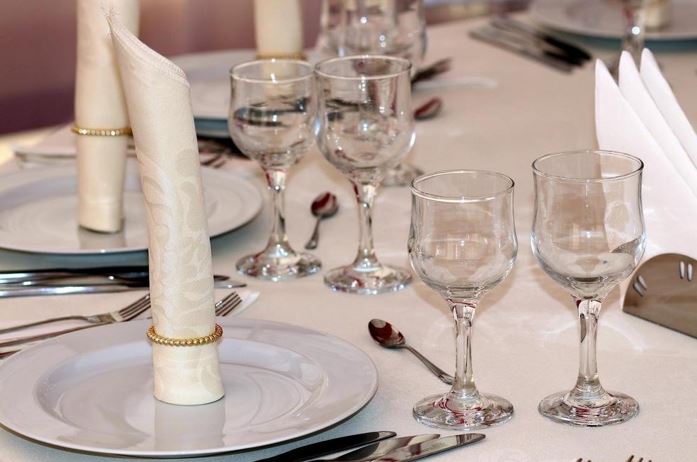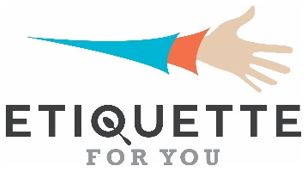Make a Remarkable Impression...in a good way - Part 2 of 3
LifeSkills Academy Blog
Check back often to find interesting information and updates.
Make a Remarkable Impression...in a good way - Part 2 of 3
Most of us want to be remembered fondly or to make a great impression and be noted for our uniqueness. Thomas Corley’s book - “Change your Habits, Change your Life”- provides insight on how self-made millionaires accomplished that over his 5-year study. Three habits in specific – dubbed as “rich habits” (according to Thomas) - are:
- Learning how to properly introduce – yourself and others - Part 1
- Exhibiting proper dining etiquette in social settings – Part 2
- Sending handwritten thank you cards. – Part 3
Proficiency with these three habits provides steppingstones to savvy professionalism and builds trust – for clients, team members, leadership, family, and friends. Others will not ponder if they will be embarrassed by your behavior around their key relationships.
Who does not want to make a memorable impression on others? Well, most of us would answer this question positively.
Some of us do not wish to be noticed. Good luck with that. ‘People-watching’ is still a worldwide major sport and, short of never leaving your burrow, we all are under the observation of others.
So here are straightforward ways to make a lasting impression that will bring a smile and a kind memory to those you encounter … whether it’s a chance or a long-term encounter.

Dining etiquette has many aspects to it. The regular dining experiences we have call for a brief list to be proficient.
- No foods are finger-licking good!
a. Our pets can do this because we don’t give them napkins. The rest of us need to use our napkins.
2. The salt & pepper are married and travel together.
a. This assures that they will not be separated at opposite sides of the table when needed.
3. As soon as you’re seated, the napkin goes in your lap.
a. If you step away during the meal, the napkin goes, crumpled up, on the side of your plate and awaits your return.
b. Some will say it goes on the chair. Yes, it can go on the chair as long as there are no messy wipes on it (ketchup, butter, etc.) which can cause staining – on the chair and you!
4. Four-letter utensils go on the left (also four letters) of your plate; five-letter utensils go on the right (also five letters) of your plate.
a. Utensils are used in the order placed working in towards the plate.
b. Once a utensil is used, it does not return to the table. Place along the edge of your plate off the table.
c. If you drop a utensil while in a restaurant, do not pick it up. It will be retrieved by the wait staff and replaced.
d. Please note, there is no designated spot for a cell phone at the table. They should be turned off (unless you are expecting an emergency call) and put away.
5. Bread Plate, Drinks
a. Make a small letter “b” with your left hand; make a small letter “d” with your right hand. This is an easy reminder that the “b”read plate goes on the left of our dinner plate; “d”rinks go on the right. This will save you from indulging in someone else’s food or drink.
6. Host/Hostess set the lead
a. When the Host/Hostess takes up their fork, all others at the table can begin to eat. Alternatively, the Host/Hostess can encourage all to start without them, so the food stays fresh.
b. If there is any doubt of how to handle any portion of the meal, follow the Host/Hostess’ lead. Observe how they handle it and do the same. You’ll always be in sync.
c. If attending a no-host business lunch, begin your meal when all have been served at your table. If you’re starving, drink some water to help your patience and respect.
7. Ending the meal
a. To signal that you are finished eating, the knife and the fork are placed together diagonally on the plate; the knife pointing to the left, the fork before the knife, tines up and with the lowest point on the right (or like clock hands at 10:20). This is particularly helpful for waitstaff so they can remove dishes and tableware timely without hurrying you along.
These are easy to add to your dining activities and polish your social savvy. They will serve you well in your community of friends, relatives, business relations, leaders, and any others you serve. Those relationships are the building blocks we each gather to form alliances, friendships, and those we value as “family.” And that is how we forge connections and take our place in the lives of others to fulfill our value and purpose.
If you would like to deepen your social skills or have specific questions about manners, etiquette, tricky social situations, keep in touch with LifeSkills Academy to participate in upcoming workshops, webinars, or blogs. We would love to meet and hear from you personally.
Watch for Part 3 – Thank You Notes - to learn more. Thank you for visiting with us.
Etiquette For You is a valued source for one-on-one trainings, sharpening a team’s competitive edge and strengthening employee skills. A free consultation is offered to customize topics and solutions. Set an appointment to discuss your questions and design a program for yourself and/or your team: sandi@etiquetteforyou.com
LifeSkills Academy features online group learning including Etiquette and Social Intelligence. Sign up for class notices: https://www.lifeskillsacademy.expert

Most Recent Posts ...
Posted on: 7/14/2025
Posted on: 7/7/2025
Posted on: 6/30/2025
Posted on: 6/23/2025
Search All Blog Posts
Blog Post Archive Categories
- Happy 4th of July from LifeSkills Academy!
- The Art of Interrupting
- Avoid a Business Dining Disaster - Showcase Your Savvy
- Mastering Patience: How to Follow Up on Job Applications
- Navigating Global Hierarchies Without Breaking a Sweat
- Crash Course in International Dining Etiquette
- Words of Wisdom: Traveling 2024
- Thankful Thursdays
- Mothers - Words of Wisdom
- My interview with Dennis Pearce





